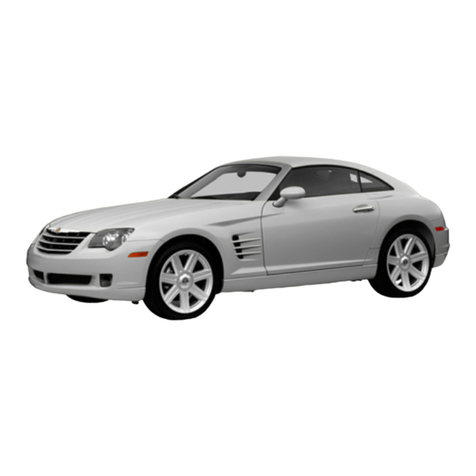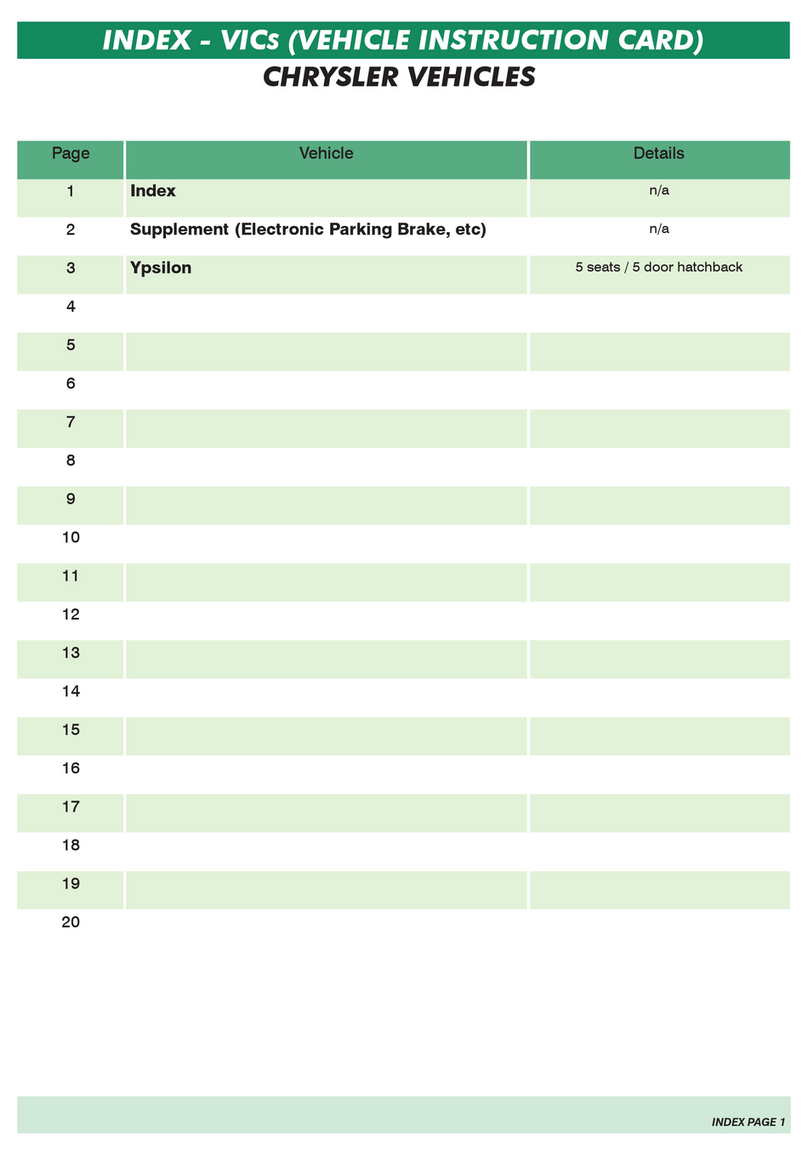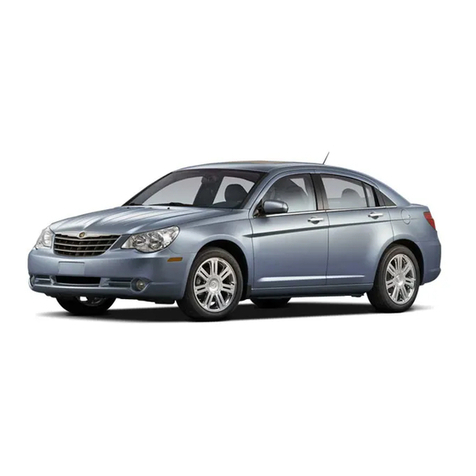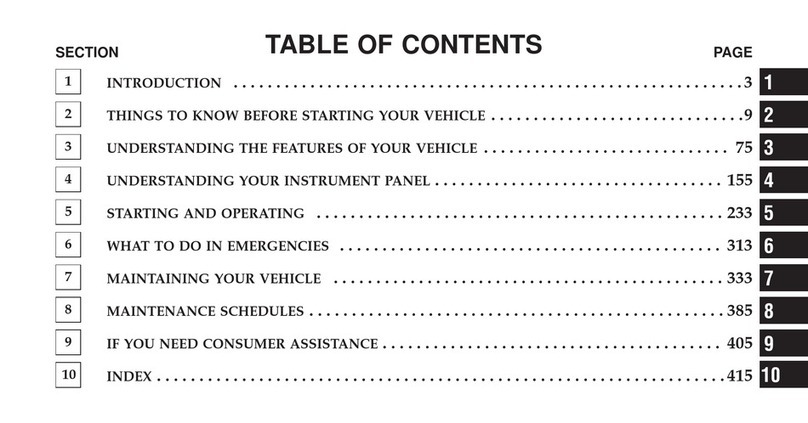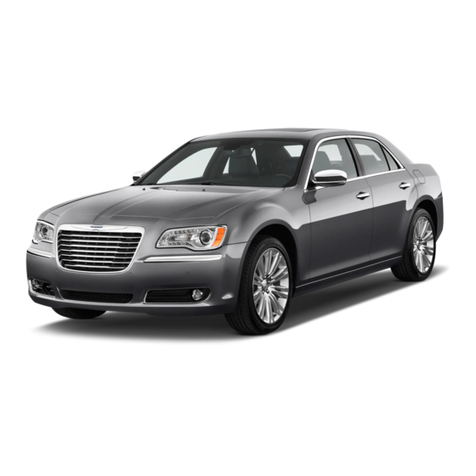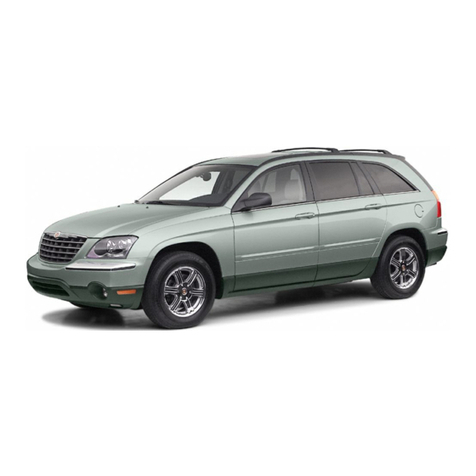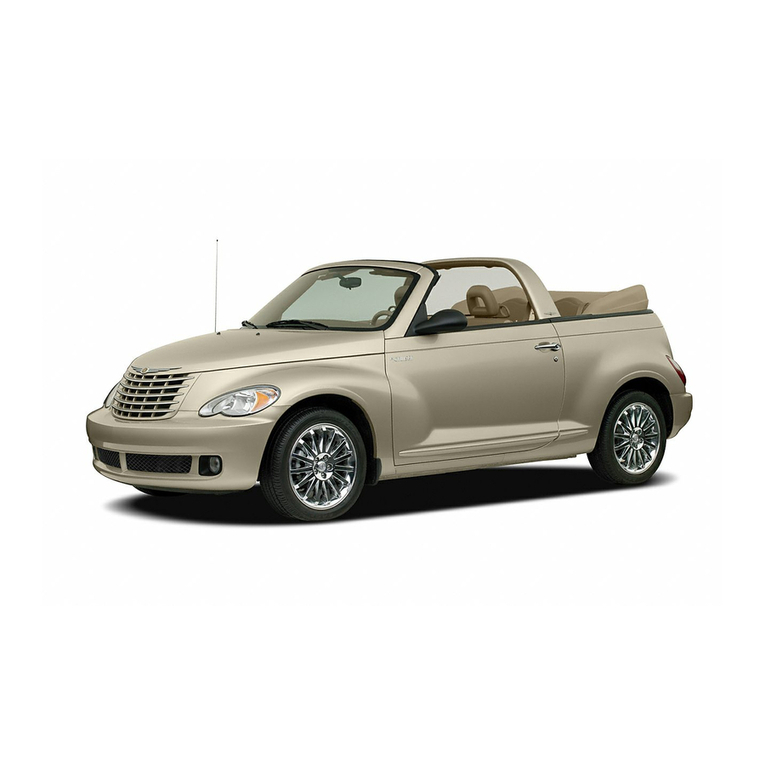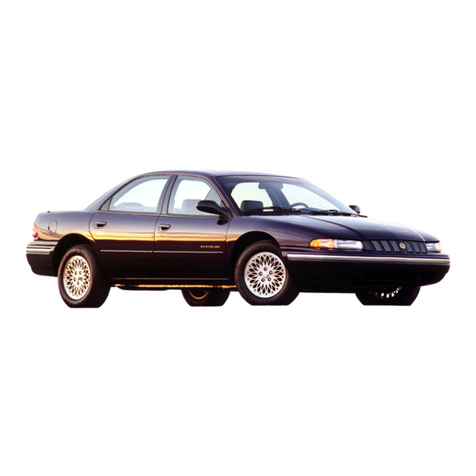
GETTING TO KNOW YOUR VEHICLE 7
(Continued)
NOTE:
During vehicle start up and shut down, a clicking noise
may be heard from within the vehicle. When the igni-
tion is in the ON/RUN position, the high voltage battery
contactors inside the battery are closed to make the
stored electricity inside available for vehicle use. After
the vehicle is shut down, the contactors open to electri-
cally isolate the battery from other vehicle systems.
The clicking noise is the sound of these contactors as
they open and close during normal operation.
The Audible Pedestrian Warning system will emit a
noise from the front of the vehicle when driving forward
at speeds below 22 mph (35 km/h). It will also emit a
noise from the rear of the vehicle when in REVERSE,
and from both the front and rear of the vehicle when in
NEUTRAL. For more information on this system, see
Úpage 47.
BATTERY CONDITIONING
In extreme temperatures, high or low, the high voltage
battery may need to be conditioned, and therefore may
require the vehicle to be plugged in.
If the ambient temperature is 5°F (-15°C) or below at
vehicle shut down, the instrument cluster will display the
message “Plug In Vehicle To Condition Battery”.
If the battery temperature is below -22°F (-30°C), or
131°F (55°C) or above, the vehicle will NOT start:
If the vehicle is plugged in at these battery tempera-
tures, the instrument cluster will display the message
“Please Leave Key In RUN — Battery Conditioning
Needed”.
If the vehicle is not plugged in at these battery
temperatures, the “Plug In Vehicle To Condition
Battery” will be shown in the instrument cluster display.
If the battery temperature is below -27°F (-33°C), the
message “Please Leave Key In RUN — Battery Condi-
tioning Needed” will be displayed whether the vehicle
is plugged in or not.
WARNING!
In the event of a collision:
If your vehicle is still drivable, pull off to the side of
the road, when safe to do so, and place the transmis-
sion in the PARK position, apply the parking brake,
and turn the vehicle off.
Check your vehicle to see if there are exposed
high-voltage parts or cables. To avoid electrical stock
which can result in serious injury or death, never
touch wiring, connectors, and other high-voltage
parts, such as the inverter unit and the Lithium-ion
battery.
If the vehicle receives a strong impact to the floor
while driving, stop the vehicle in a safe location and
check the floor.
Leaks or damage to the Lithium-ion battery may
result in a fire and toxic emissions which can cause
severe burns, respiratory injuries, and other serious
injuries or death. If you discover these leaks, contact
emergency services immediately. Since the fluid leak
may be Lithium Manganate from the Lithium-ion
battery, never touch the fluid leak inside or outside of
the vehicle. If the fluid contacts your skin or eyes,
wash these areas immediately with a large amount
of water and obtain immediate medical attention to
help avoid serious injury.
If a fire occurs inside your vehicle, leave the vehicle
as soon as possible. Only use a type ABC, BC, or C fire
extinguisher that is meant for use on electrical fires.
Using a small amount of water, or the incorrect fire
extinguisher can result in serious injury or death from
electrical shock.
If you are not able to safely assess the vehicle due to
vehicle damage, do not touch the vehicle. Leave the
vehicle and contact emergency services. Advise first
responders that this is a hybrid-electric vehicle.
In the event of an accident that requires bodywork,
refer to an authorized dealership.
WARNING!
2
23_RUP_H_SU_EN_USC_t.book Page 7

